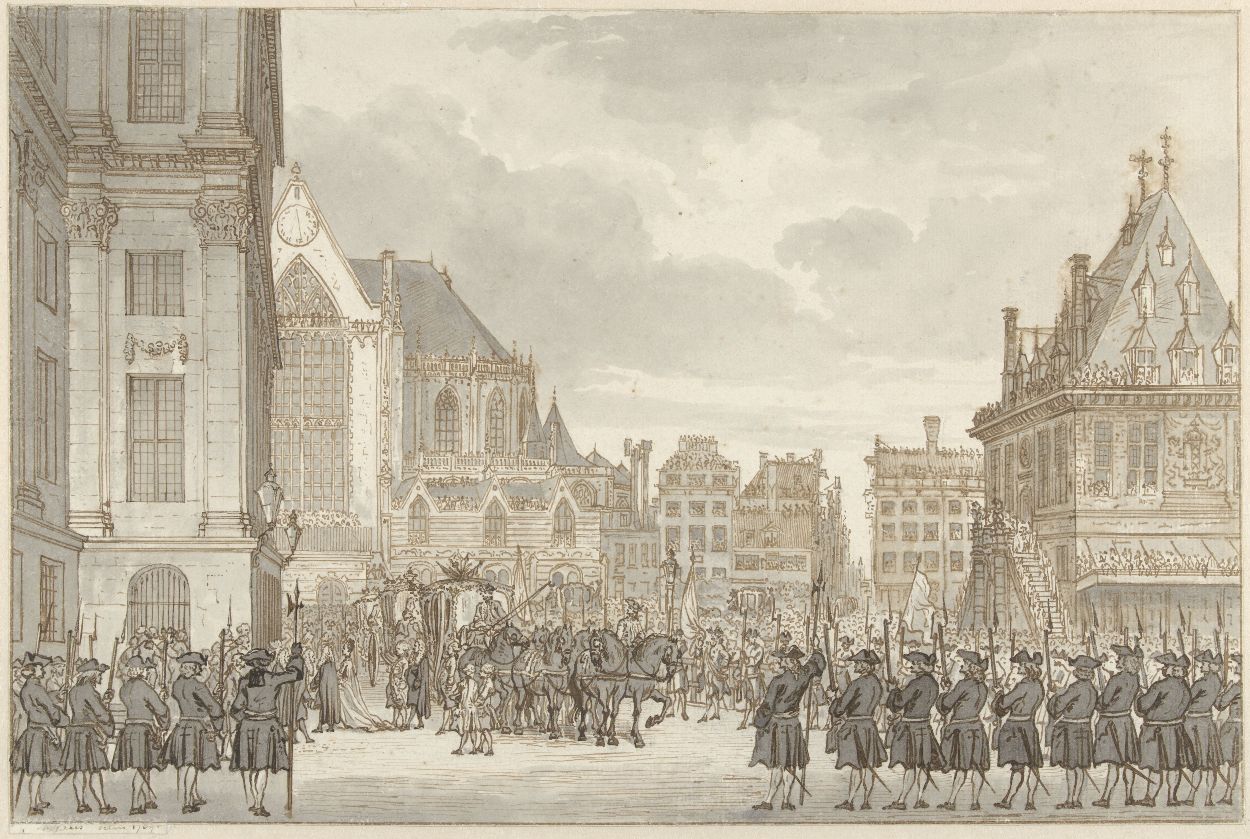Het vijfdaagse bezoek van stadhouder Willem V aan Amsterdam (1768)
In 1768, stadhouder Willem V, the last stadhouder of the Dutch Republic, visited Amsterdam for five days. This visit was significant as it highlighted the relationship between the stadtholder and the city. In this article, we will explore the historical context of the visit, the events that took place, and the impact it had on the city.
Historical Context
The Dutch Republic was a confederation of seven provinces that was established in 1588. It was a prosperous and influential nation, known for its trade and maritime power. The stadtholder was the highest official in the Republic and was responsible for the military defense of the country. However, the stadtholder was not a king or a monarch, and his power was limited.
Willem V became stadtholder in 1751, and his reign was marked by political instability and economic decline. The Republic was facing internal divisions and external threats, and the stadtholder was unable to address these challenges effectively. The visit to Amsterdam was an attempt to improve relations between the stadtholder and the city, which had a long history of tension and conflict.
The Visit
Willem V arrived in Amsterdam on September 29, 1768, and was greeted by a large crowd. He stayed at the Dam Palace, the official residence of the city’s magistrates. The visit was carefully planned and orchestrated, with a series of events and ceremonies that aimed to showcase the city’s wealth and power.
Day 1: Arrival
On the first day of the visit, Willem V was welcomed by the city’s officials and escorted to the Dam Palace. He was received by the burgomasters, who presented him with a silver casket containing the keys to the city. The stadtholder then attended a banquet at the palace, where he was entertained by musicians and dancers.
Day 2: Tour of the City
On the second day of the visit, Willem V went on a tour of the city. He visited the Westerkerk, the Nieuwe Kerk, and the Oude Kerk, three of the city’s most prestigious churches. He also visited the VOC headquarters, the East India Company, which was one of the most powerful and influential companies in the world at that time.
Day 3: Festivities
The third day of the visit was marked by festivities and celebrations. Willem V attended a grand parade, where he saw the city’s militia and guilds in action. He also attended a concert at the theatre, where he heard the music of Mozart and Gluck.
Day 4: The Exchange
On the fourth day of the visit, Willem V visited the Exchange, the hub of the city’s commercial activity. He was welcomed by the merchants and bankers, who presented him with gifts and expressed their loyalty to him. The stadtholder then attended a banquet at the Exchange, where he was entertained by the city’s leading citizens.
Day 5: Departure
The final day of the visit was marked by a farewell ceremony. Willem V was escorted to the city gates by the burgomasters and the city’s militia. He then left Amsterdam, accompanied by a large crowd that wished him a safe journey.
The Impact
The visit of Willem V to Amsterdam was an important event in the history of the Dutch Republic. It symbolized the relationship between the stadtholder and the city and demonstrated the wealth and power of Amsterdam. The visit also had political implications, as it helped to improve the stadtholder’s standing and popularity.
However, the visit did not address the underlying problems of the Republic. The political and economic crisis continued, and the Republic was unable to prevent its decline. The visit was a moment of glory in a time of decline, and it highlights the complexity and paradoxes of Dutch history.
Conclusion
The five-day visit of stadhouder Willem V to Amsterdam in 1768 was a significant event in the history of the Dutch Republic. It demonstrated the relationship between the stadtholder and the city and highlighted the wealth and power of Amsterdam. However, it did not address the underlying problems of the Republic, and its impact was limited. The visit remains a fascinating episode in Dutch history, and it reminds us of the complexity and contradictions of this remarkable nation.
FAQs
1. Why was the visit of Willem V to Amsterdam important?
The visit was important as it symbolized the relationship between the stadtholder and the city and demonstrated the wealth and power of Amsterdam. It also had political implications, as it helped to improve the stadtholder’s standing and popularity.
2. What were the events that took place during the visit?
The visit was carefully planned and orchestrated, with a series of events and ceremonies that aimed to showcase the city’s wealth and power. These events included banquets, parades, concerts, and visits to churches and commercial institutions.
3. What was the historical context of the visit?
The Dutch Republic was facing internal divisions and external threats, and the stadtholder was unable to address these challenges effectively. The visit to Amsterdam was an attempt to improve relations between the stadtholder and the city, which had a long history of tension and conflict.
4. What was the impact of the visit on the Dutch Republic?
The visit had limited impact on the Dutch Republic, as it did not address the underlying problems of the Republic. The political and economic crisis continued, and the Republic was unable to prevent its decline. However, the visit remains a fascinating episode in Dutch history.
5. What does the visit of Willem V to Amsterdam tell us about Dutch history?
The visit highlights the complexity and contradictions of Dutch history. It was a moment of glory in a time of decline, and it demonstrates the paradoxes of a nation that was once so powerful and influential.
